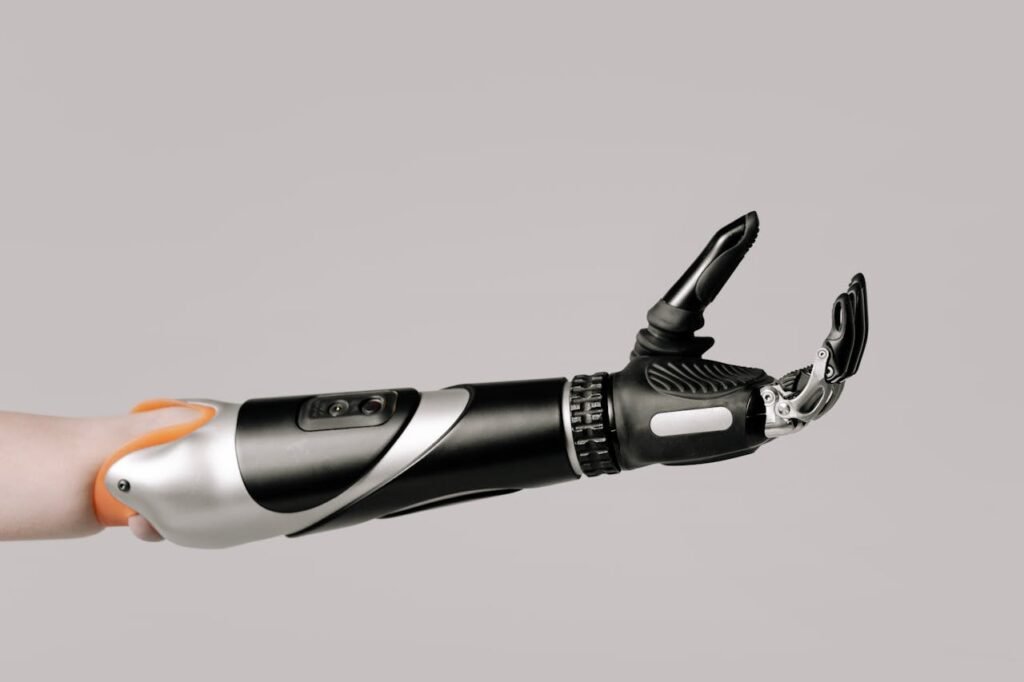Learning to use a prosthetic hand or arm is not just about wearing the device. It’s about teaching your body and brain to work with it as if it were your own. For many users, this can feel exciting but also overwhelming. Muscles may be weak, signals may be unclear, and movements may not feel natural in the beginning.
This is where EMS—Electronic Muscle Stimulation—can play a powerful role. By gently activating and strengthening the muscles that control a myoelectric or bionic prosthetic, EMS makes the whole process smoother. It builds strength, improves control, and helps users adapt faster.
In this article, we’ll explore in detail how EMS complements advanced prosthetics, why it matters, and how users, therapists, and clinics can apply it effectively. Our goal is to keep things simple, practical, and encouraging—so every reader feels not just informed, but hopeful.
Understanding Myoelectric and Bionic Prosthetics
How Myoelectric Prosthetics Work
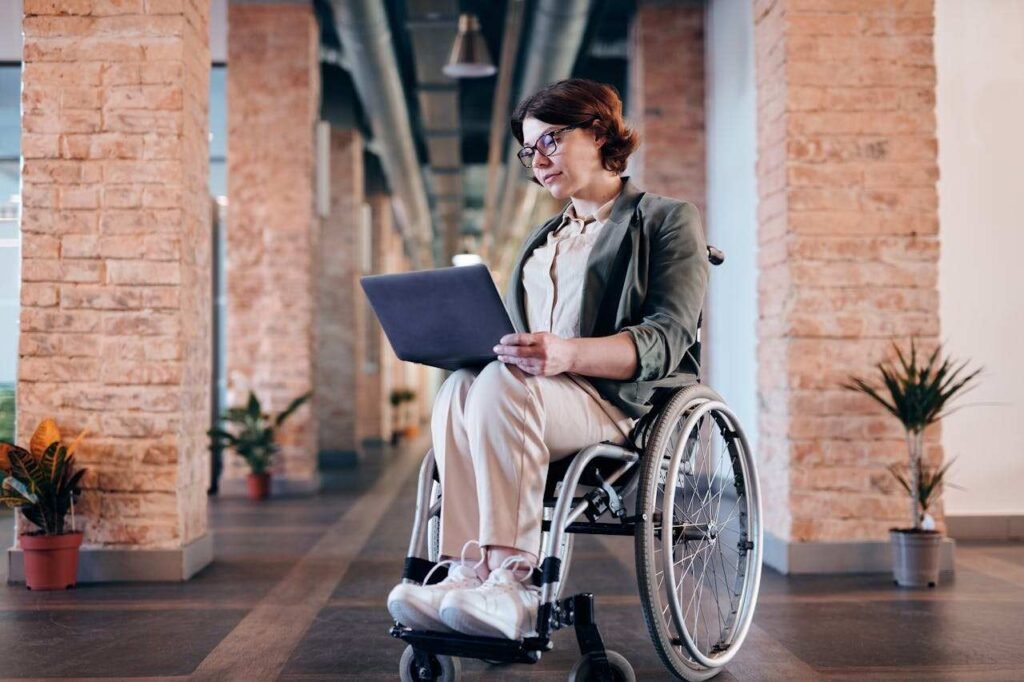
A myoelectric prosthetic uses your body’s own electrical signals to move. These signals come from the muscles in your residual limb. When you try to contract a muscle, sensors on the prosthetic pick up the signal and translate it into movement—like opening or closing the hand.
The beauty of this technology is that it feels natural. You don’t need to press buttons or use cables. You simply think about moving, and the prosthetic responds.
But for this to work well, the muscles need to be strong and clear in their signals. Weak or inactive muscles can make the prosthetic harder to control. That’s where EMS can help.
The Advantage of Bionic Prosthetics
Bionic prosthetics go a step further. They don’t just respond to signals—they also give users more advanced control and sometimes even feedback. Some bionic devices allow multiple grip patterns, wrist rotation, or more fluid motion that feels closer to a natural limb.
But like myoelectric prosthetics, bionics also depend on muscle signals. The prosthetic can only respond as well as the body allows it to. If the signals are faint, inconsistent, or tiring, the experience becomes frustrating.
That’s why strengthening the body with EMS is such an important part of success with these devices.
Why EMS Matters Before and After Prosthetic Fitting
Preparing the Body for a Prosthetic
When someone first gets a prosthetic, their muscles are often weak. They may not have been used regularly since the amputation. In some cases, the brain has started to “forget” how to send signals to those muscles.
Starting EMS before prosthetic fitting gives these muscles a head start. By stimulating them, EMS keeps them alive, active, and responsive. This makes it easier for the prosthetic sensors to pick up signals right from the beginning.
It’s like warming up the system before running a big machine—you get smoother performance from day one.
Adapting After the Prosthetic Is Worn
Even after fitting, EMS continues to help. Using a myoelectric or bionic prosthetic can be tiring at first. The muscles need endurance to keep sending signals, especially for long tasks.
EMS builds that endurance. It strengthens the muscles so they can fire consistently, without wearing out too quickly. This means users can wear their prosthetic for longer and with less fatigue.
It also improves coordination. By stimulating muscles in a controlled way, EMS trains them to contract more precisely. This leads to smoother, more natural prosthetic movements.
Reducing Long-Term Problems
Without regular activation, residual muscles shrink and joints stiffen. This not only makes prosthetic control harder but can also cause pain, poor socket fit, and even long-term complications.
EMS helps prevent this by keeping the muscles toned and the joints more mobile. It becomes a long-term support system, ensuring the body stays ready to work with the prosthetic instead of resisting it.
The Brain-Muscle-Prosthetic Connection
How the Brain Responds
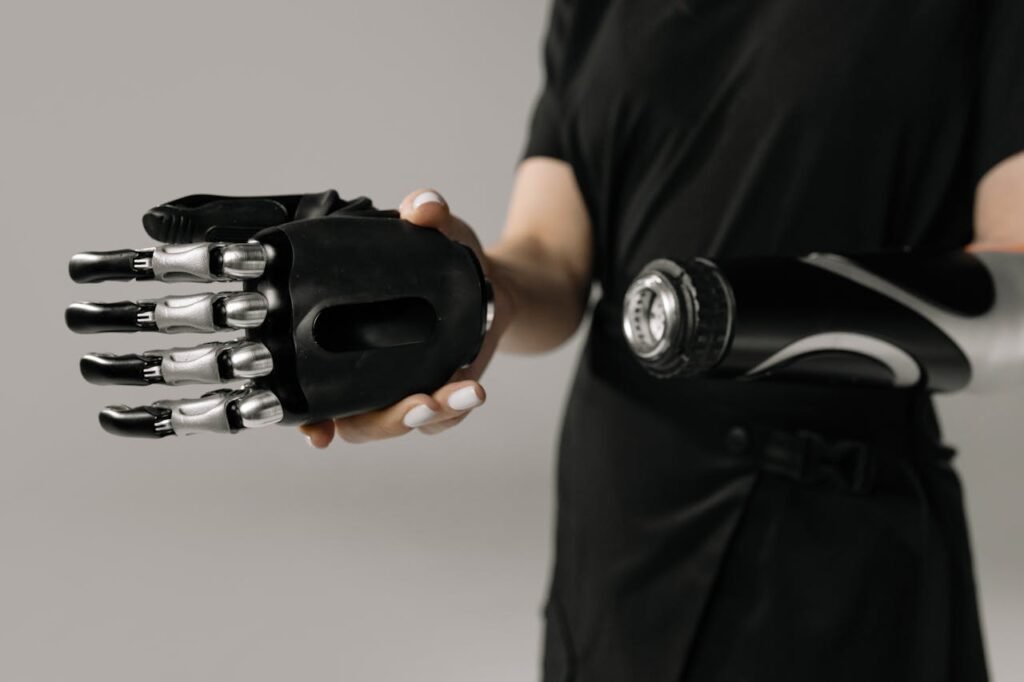
When EMS stimulates a muscle, the brain notices. Even if you’re not consciously moving, the brain receives feedback that the muscle is active. Over time, this strengthens the pathway between the brain and the muscle.
For prosthetic users, this is critical. The clearer that pathway is, the easier it is to send strong signals to the prosthetic. EMS helps rebuild that bridge when it has weakened after limb loss.
Building Muscle Memory
Muscle memory is what makes actions automatic. Think of how you type on a keyboard without looking at the keys. For prosthetic users, muscle memory helps them use their device naturally, without overthinking each motion.
EMS accelerates this process. By repeatedly activating muscles, it helps the brain learn which signals lead to which prosthetic movements. Over time, this makes using the prosthetic smoother and more intuitive.
Improving Emotional Confidence
Confidence plays a huge role in prosthetic success. Many users feel hesitant in the beginning, afraid they might drop something or fail at simple tasks. EMS provides reassurance by showing progress early.
When users feel their muscles growing stronger and their control improving, they start to trust their body again. This emotional confidence makes them more willing to practice and wear their prosthetic consistently.
Practical EMS Strategies for Prosthetic Users
Starting Small and Building Up
When introducing EMS into a rehabilitation program, the key is to start small. Short sessions of around 15 to 20 minutes are enough in the beginning. These sessions gently activate the muscles without overwhelming them. Over time, the duration and intensity can be increased as the muscles adapt. The focus should be on consistency rather than pushing too hard. Muscles respond best to regular, steady training, and EMS allows this without requiring heavy effort from the user.
Combining EMS with Voluntary Movement
One of the most effective ways to use EMS is to pair it with active movement. For example, if a user is practicing gripping with a myoelectric hand, EMS can stimulate the forearm muscles at the same time. This dual input strengthens the connection between brain and muscle, reinforcing motor learning. It also builds confidence because the user can see and feel the muscle responding alongside their intention. Over time, this leads to smoother, more natural prosthetic control.
Using EMS Before and After Training
Timing also plays a role. Using EMS before prosthetic training helps warm up the muscles, making them more responsive during practice. It primes the body for movement, reducing stiffness and improving control. On the other hand, using EMS after training helps with recovery. The stimulation improves circulation, clears metabolic waste, and reduces fatigue. For many users, this means they can train longer and recover faster, without feeling sore or drained.
EMS in Clinical Applications
A Therapist’s Perspective
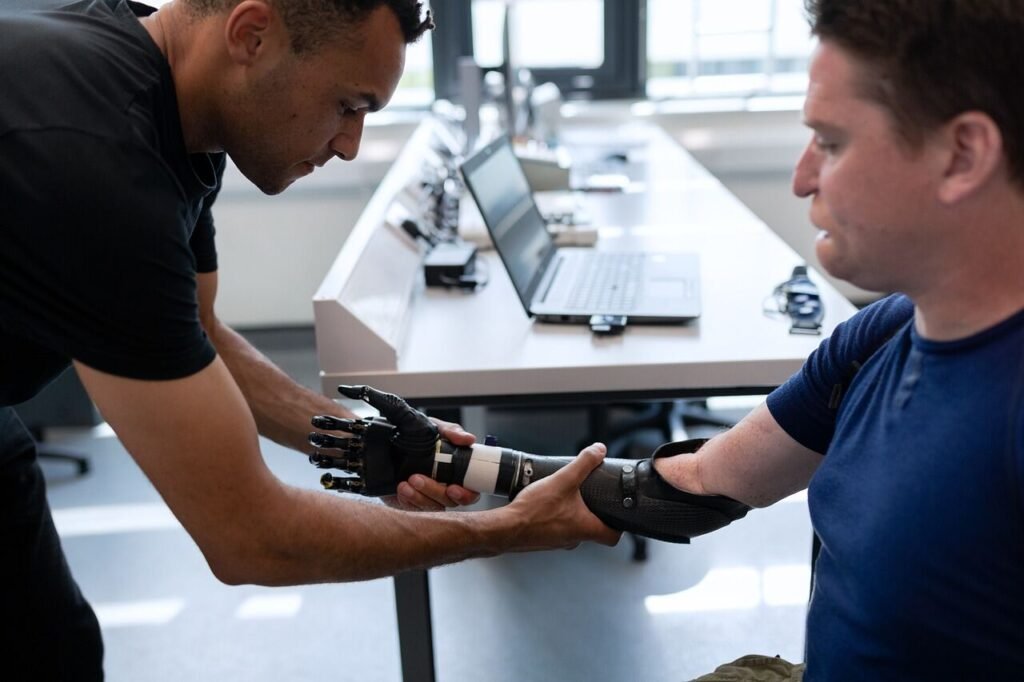
For therapists, EMS offers a way to unlock faster progress. It can be used as part of pre-prosthetic training to keep muscles alive and active, or as part of post-fitting rehabilitation to enhance control. By integrating EMS into therapy sessions, clinicians can guide patients through exercises while the stimulation reinforces the effort. This layered approach accelerates learning and helps patients reach milestones sooner.
Customizing for Each Patient
Every patient has different needs. Some may require stronger stimulation to activate larger muscle groups, while others may benefit from lighter, more frequent sessions. Electrode placement also varies depending on the level of amputation and the prosthetic being used. For example, a below-elbow amputee might focus on forearm muscles, while an above-elbow amputee might need shoulder and bicep stimulation. Customizing these details ensures EMS is not just effective but also comfortable for the user.
Tracking Progress with EMS
Clinics can also use EMS sessions as a measurable way to track progress. Improvements in muscle tone, signal clarity, and endurance can all be recorded. Patients often feel encouraged when they can see data alongside what they feel in their bodies. A therapist showing a user that their muscle signals have grown stronger in just a few weeks can be a powerful motivator. This mix of science and personal progress helps keep rehabilitation engaging.
Long-Term Benefits of EMS with Prosthetics
Preventing Muscle Shrinkage
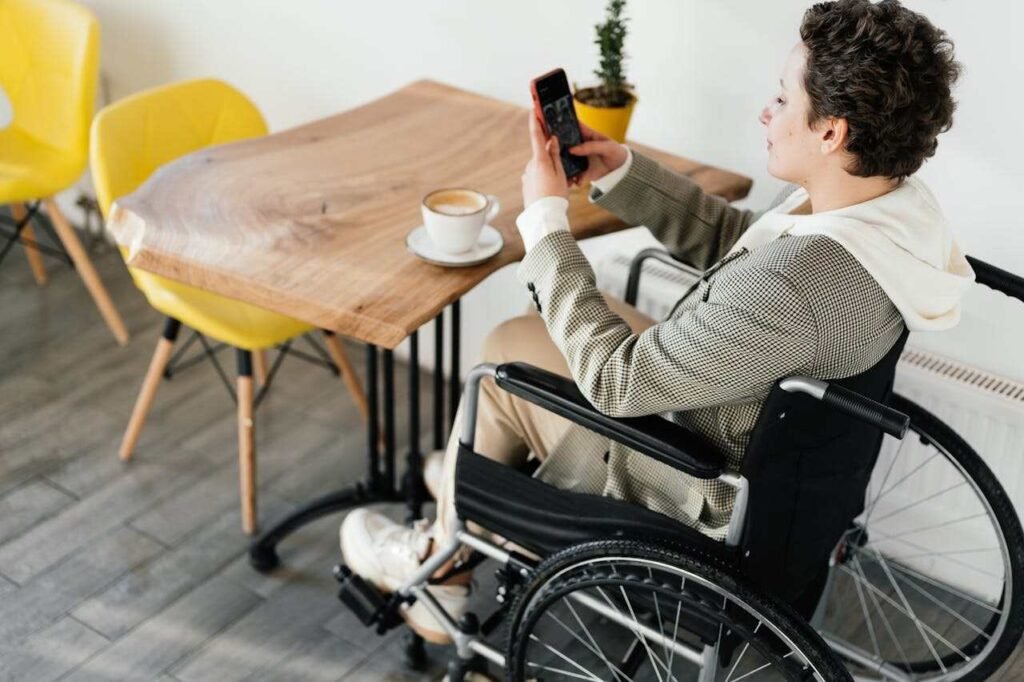
One of the biggest risks after limb loss is muscle atrophy. Without regular use, muscles weaken and shrink. This makes it harder to control a prosthetic, reduces comfort, and can even alter the shape of the residual limb. EMS helps prevent this by keeping the muscles active, even when voluntary movement is limited. Regular stimulation preserves strength, tone, and endurance, giving the user a better foundation for prosthetic use over the long term.
Supporting Socket Comfort
A prosthetic socket fits best when the residual limb is healthy and well-toned. If the muscles shrink or the limb changes shape, the socket can become uncomfortable or unstable. EMS supports socket comfort by maintaining muscle bulk and promoting better circulation in the limb. This reduces pressure points, skin breakdown, and the constant need for socket adjustments. Users who combine EMS with their prosthetic routine often report being able to wear their devices longer without discomfort.
Building Independence
At its core, the goal of both EMS and prosthetic technology is independence. When a user has strong, responsive muscles and clear control signals, daily life becomes easier. They can cook, dress, write, or work with more confidence and less fatigue. This independence builds self-esteem and allows them to live more freely. EMS complements the prosthetic not just mechanically but emotionally—helping users trust their own body again.
The Emotional Impact of EMS with Prosthetics
Restoring Trust in the Body
For many people, the hardest part of adapting to a prosthetic is not the physical challenge—it’s the mental one. After limb loss, trust in the body often feels broken. Movements that were once automatic now require focus and effort. EMS helps restore that trust. When users see their muscles responding, contracting, and growing stronger, they regain belief in what their body can do. This sense of progress lifts confidence and makes the journey with a prosthetic less intimidating.
Overcoming the Fear of Failure
In the early stages of prosthetic training, frustration is common. A hand may not grip as intended, or a task may take longer than expected. This can lead to fear of failure, and in some cases, users avoid wearing the prosthetic altogether. EMS helps reduce this fear by creating small, visible wins. Each contraction is proof that progress is happening. Over time, these small wins add up to meaningful improvements, which makes users more willing to practice, experiment, and keep going.
Reducing Emotional Fatigue
Living with a prosthetic is not just physically tiring—it can be emotionally draining. The constant effort to adapt, control, and perform can leave users exhausted. EMS helps by reducing the physical effort needed for muscles to strengthen and coordinate. When the body requires less strain to improve, the emotional load feels lighter too. Many users describe EMS as a way to “share the burden” of recovery, giving them space to focus on their goals without burning out.
How Clinics Can Position EMS as a Value-Added Service
Offering EMS as Pre-Prosthetic Training
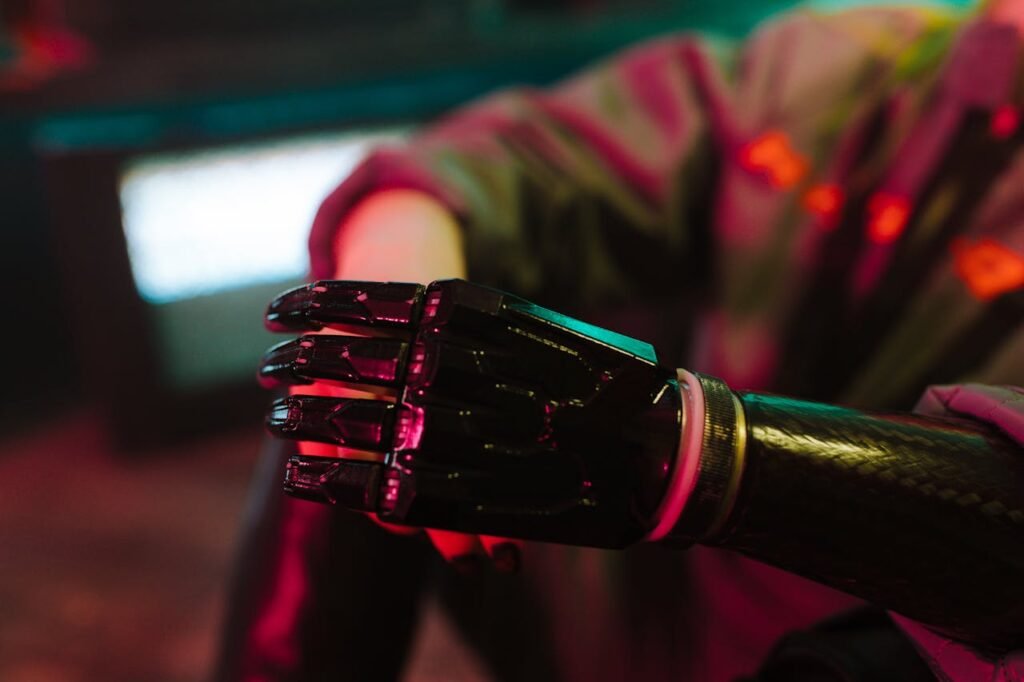
For prosthetic clinics, EMS can be positioned as a preparatory program before fitting. By offering a structured EMS plan to strengthen and activate residual muscles, clinics help users start their prosthetic journey with an advantage. This not only improves prosthetic control but also reduces fitting delays caused by weak or inactive muscles. A pre-prosthetic EMS program becomes a valuable part of the clinic’s offerings and gives patients a clear path forward.
Creating Specialized EMS Programs
EMS is not one-size-fits-all, and clinics can design specialized programs for different needs. A “muscle endurance program” can support users who want to wear their prosthetic longer each day. A “signal strengthening program” can help those struggling to control their device consistently. By creating these structured offerings, clinics provide targeted solutions instead of generic therapy. This specialization builds patient trust and sets the clinic apart as a leader in advanced rehabilitation.
Building Long-Term Patient Relationships
EMS also allows clinics to extend their support beyond the initial prosthetic fitting. Many users continue to benefit from EMS months or even years after they first receive their device. By offering ongoing EMS sessions, home device rentals, or follow-up care packages, clinics create long-term relationships with their patients. This continuity ensures better outcomes for users and creates a sustainable model for the clinic itself.
Marketing EMS as Innovation
Patients are increasingly looking for advanced, innovative care. By highlighting EMS as part of their rehabilitation approach, clinics can position themselves as forward-thinking providers. Sharing patient success stories, publishing simple educational content, and demonstrating EMS during consultations can build curiosity and trust. Patients want to know they are in capable hands, and showcasing EMS as a modern, effective tool helps deliver that message clearly.
User Stories That Bring Hope
Learning to Grip Again
One user, a young professional who lost his hand in an accident, struggled with myoelectric control in the early weeks. His forearm signals were too weak, making the prosthetic slow and unresponsive. After integrating EMS into his daily training, his grip signals became stronger within weeks. Soon he was typing on his laptop and holding a coffee cup with ease. EMS turned frustration into momentum, making him believe he could adapt fully to his prosthetic.
Overcoming Socket Discomfort
Another user, an above-elbow amputee, complained about discomfort in her prosthetic socket due to muscle shrinkage. The inconsistent fit caused pressure points and pain. With EMS sessions focused on her bicep and shoulder, she was able to maintain tone and shape in her residual limb. This improved socket comfort dramatically, allowing her to wear her prosthetic for longer periods. She described the change as “like finally fitting into clothes that are made for me.”
Regaining Confidence in Public
A middle-aged man who had stopped using his prosthetic due to constant fatigue began EMS therapy at home. Within months, he noticed not only stronger muscle control but also greater stamina. He began using his prosthetic outside the home again, rejoining family dinners and social activities without fear of embarrassment. For him, EMS was not just a therapy—it was a bridge back to the life he wanted to live.
Integrating EMS with Prosthetic Use in the Long Term
Beyond Early Rehabilitation
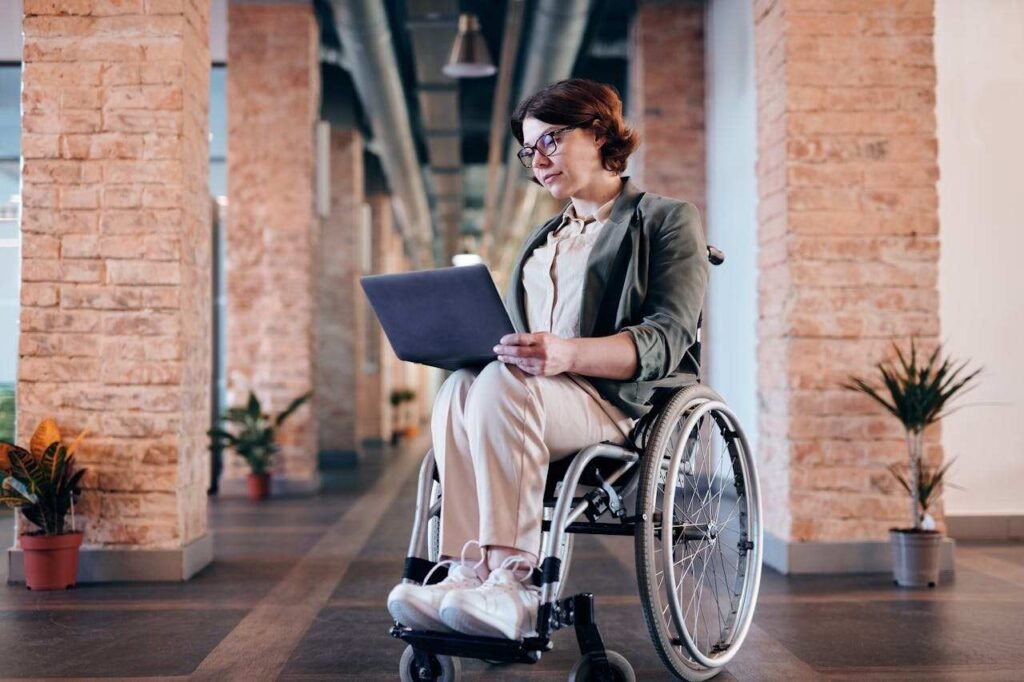
Most people think of EMS as something used only in the early stages of recovery, when muscles are weak and the brain-muscle connection needs to be rebuilt. While EMS is incredibly valuable at this stage, its role does not end there. For prosthetic users, EMS continues to add value long after the fitting process. It becomes part of a long-term maintenance plan that helps preserve strength, prevent complications, and keep movements smooth and controlled. The longer someone lives with a prosthetic, the more they realize that keeping muscles active is not just about function today—it’s about ensuring stability for years to come.
Helping With Everyday Endurance
Using a myoelectric or bionic prosthetic is a marathon, not a sprint. Even when users become skilled at controlling their device, fatigue can creep in. The small residual muscles that generate signals are not designed for endless repetitions without support. Over time, they tire, which can make the prosthetic less responsive. EMS builds endurance in these muscles, training them to fire consistently over longer periods. With regular use, this reduces fatigue and allows users to wear and operate their prosthetic for longer parts of the day without frustration or strain.
Keeping Socket Fit Consistent
One of the biggest ongoing challenges for prosthetic users is maintaining a proper socket fit. The residual limb changes shape over time due to muscle loss, weight fluctuations, or changes in activity levels. When the fit becomes inconsistent, discomfort follows. Pressure points form, skin gets irritated, and the prosthetic may even slip or feel unstable. EMS helps prevent this by keeping the muscles around the limb toned and full. By preserving bulk and circulation, it stabilizes the shape of the limb and supports a more consistent socket fit. This not only improves comfort but also reduces the need for frequent adjustments or refittings.
Supporting Aging Users
For younger users, prosthetic training often comes with energy and motivation. But as users age, maintaining strength and flexibility becomes more difficult. Natural muscle loss (sarcopenia) and slower recovery times make rehabilitation harder. EMS offers a safe, low-impact way for older prosthetic users to keep their muscles engaged without overexertion. They can use EMS while seated, resting, or doing light daily activities, ensuring that even as their energy decreases, their muscles continue to support functional control. For aging amputees, this means retaining independence and avoiding the decline that often comes from inactivity.
Bridging the Gap Between Therapy and Home
In many cases, rehabilitation ends too early. Once a patient is discharged or has adapted to their prosthetic, therapy visits become less frequent. Without continued support, some users slowly regress. EMS bridges this gap by providing a tool that can be used at home safely and effectively. Devices like our BrawnBand make this possible, allowing users to take control of their progress beyond the clinic. This empowers individuals to continue improving their prosthetic control, range of motion, and endurance, long after their formal therapy ends.
Creating a Mindset of Ongoing Care
The most successful prosthetic users are those who treat rehabilitation as a lifelong journey rather than a one-time phase. EMS reinforces this mindset by making maintenance simple and accessible. Regular stimulation sessions remind the user that progress is not about sudden leaps but steady, consistent effort. Just as people use exercise or meditation daily for long-term health, EMS becomes a wellness practice for prosthetic users—a way to keep the body tuned and ready for whatever life demands.
The Future of EMS and Prosthetic Integration
Looking ahead, EMS is likely to become even more integrated with prosthetics. Researchers are exploring ways to combine EMS with real-time biofeedback, so the stimulation directly responds to user intentions. Imagine a system where, as you attempt to move your prosthetic, EMS activates the supporting muscles in sync, amplifying the signal and making the motion seamless. Such integration would make prosthetic use more intuitive than ever before. Even today, using EMS alongside myoelectric and bionic prosthetics offers a glimpse into this future—where technology and the human body work together in harmony rather than in conflict.
Conclusion: Strengthening the Bond Between Body and Prosthetic
Electronic Muscle Stimulation is more than just a therapy tool. For people using myoelectric and bionic prosthetics, it acts as a bridge—connecting the body, the brain, and the device in a stronger, clearer way. It keeps muscles alive, improves signal strength, and makes movements smoother and more natural. Just as importantly, it restores confidence, comfort, and independence.
For new users, EMS prepares the body before the prosthetic is even fitted. For experienced users, it helps maintain endurance, socket comfort, and balance in daily life. For older users, it provides a gentle way to stay active and in control. And for clinics, it creates structured programs that improve outcomes, build trust, and demonstrate leadership in innovative care.
At Robobionics, we believe prosthetics are not just machines—they are extensions of human potential. That’s why we created solutions like BrawnBand and Grippy™, designed to work hand in hand with EMS to make life easier, smoother, and fuller for every user.
If you or someone you know is ready to experience how EMS can complement a prosthetic and unlock new possibilities, we invite you to book a free demo with our team:
Your body remembers how to move. Your prosthetic is ready to respond. With EMS, you can bring the two together and take every step forward with confidence.



